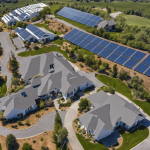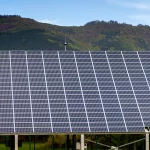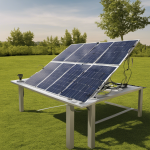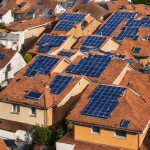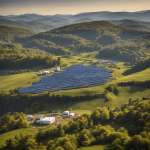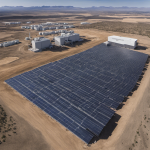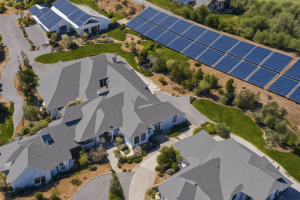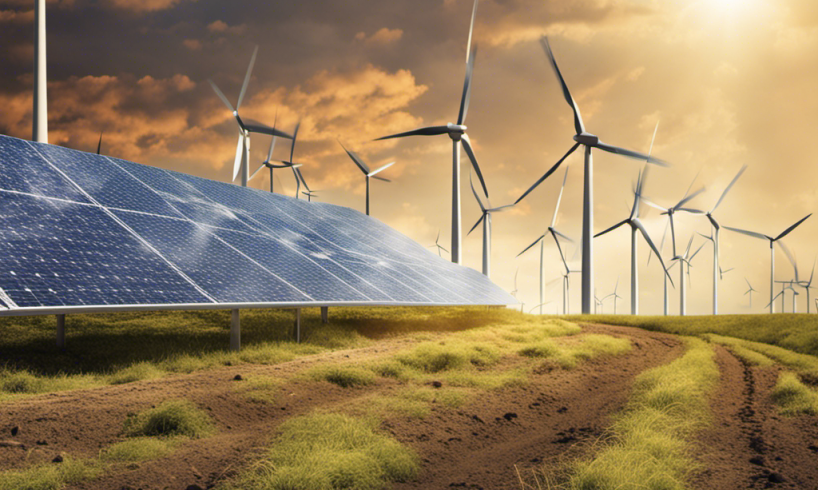
How Renewable Energy is Revolutionizing the Way We Generate Power
In recent years, the global energy landscape has undergone a remarkable transformation. As concerns about climate change and the finite nature of fossil fuels have grown, renewable energy sources have emerged as a viable and sustainable alternative. From wind and solar power to hydroelectric and geothermal energy, the world is witnessing a significant shift towards cleaner and greener sources of electricity generation. This article delves into the rise of renewable energy and explores how it is revolutionizing how we power our world.
1: Wind Power: Harnessing Nature's Force
Wind power has emerged as one of the fastest-growing renewable energy sources worldwide. With its ability to generate electricity without emitting greenhouse gases or consuming valuable resources, wind turbines have become common in many countries. From the vast wind farms of Texas to the offshore installations in the North Sea, wind power has proven its potential to provide clean and reliable energy on a large scale. Furthermore, advancements in turbine technology and the development of floating wind farms are opening up new possibilities for harnessing this abundant resource.
2: Solar Power: The Sun's Energy at Our Fingertips
Solar power has experienced a remarkable surge in popularity and affordability in recent years. With solar panels becoming more efficient and cost-effective, homeowners and businesses increasingly turn to photovoltaic systems to meet their energy needs. Solar power significantly contributes to the electricity supply in sun-drenched regions like California and Arizona. Moreover, innovative applications such as solar farms and solar-powered transportation are further expanding the reach of this renewable energy source.
3: Hydroelectric Power: Tapping into the Power of Water
Hydropower has long been recognized as a reliable and renewable source of electricity. Hydroelectric power plants can generate substantial amounts of clean energy by harnessing the energy of flowing or falling water. From the iconic Hoover Dam in the United States to the massive Three Gorges Dam in China, hydroelectric projects have proven their ability to provide a stable and consistent power supply. However, concerns about communities' environmental impact and displacement have led to a more cautious approach to developing new hydroelectric facilities.
4: Geothermal Energy: Tapping into the Earth's Heat
Geothermal energy taps into the Earth's natural heat to generate electricity and heat buildings. This renewable energy source is particularly abundant in regions with active volcanoes or geothermal reservoirs. Countries like Iceland and New Zealand have successfully harnessed geothermal energy to meet a significant portion of their electricity needs. As technology improves and exploration expands, geothermal energy has the potential to play a more significant role in the global energy mix.
5: The Benefits and Challenges of Renewable Energy
The rise of renewable energy brings numerous benefits, including reduced greenhouse gas emissions, improved air quality, and job creation. Additionally, renewable energy sources provide a more decentralized and resilient power system, reducing reliance on centralized grids and vulnerable supply chains. However, challenges still need to be addressed, including intermittency issues, high upfront costs, and the need for extensive infrastructure development. Governments, businesses, and individuals must work together to overcome these obstacles and fully realize the potential of renewable energy.
Renewable energy transforms the power landscape, offering a sustainable and cleaner alternative to traditional fossil fuel-based electricity generation. Wind power, solar power, hydroelectric power, and geothermal energy are leading the charge, providing reliable sources of electricity with minimal environmental impact. While challenges remain, the global shift towards renewable energy is a positive step towards a more sustainable future. As technology advances and economies of scale are achieved, renewable energy will undoubtedly play an increasingly significant role in meeting the world's growing energy demands. This transition not only reduces greenhouse gas emissions but also fosters energy independence and resilience against volatile fossil fuel markets. Innovations like the solarpowered outdoor living solution exemplify how renewable energy is seamlessly integrating into everyday life, enhancing functionality while promoting eco-friendly practices. Such advancements underscore the potential for renewable energy to revolutionize not just the energy sector, but also the way we live and interact with our environment.

James Smith is our editor. He is an accomplished and versatile news writer with over a decade of experience covering a wide range of topics, including politics, business, and real estate. Throughout his career, James has been dedicated to uncovering the truth and presenting unbiased, factual reporting to his audience.


